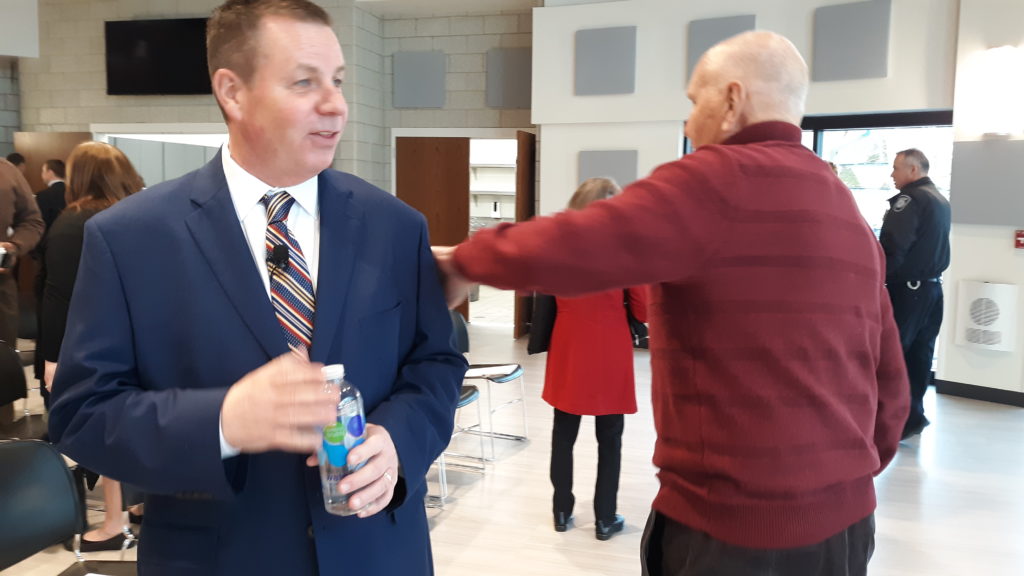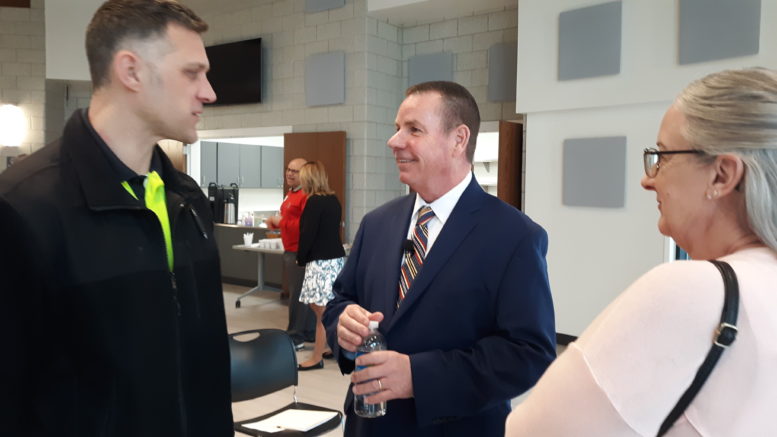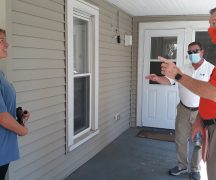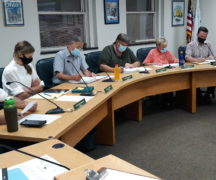By JAN LARSON McLAUGHLIN
BG Independent News
Mayor Mike Aspacher has heard the complaints – Bowling Green spends too much effort planning, too little time doing.
In his State of the City Address on Wednesday, the mayor talked about the need for good planning – then offered some ideas of how the city can turn those plans into reality. Among his proposals was a “Heritage 2025” project for the downtown, the potential for at least one new fire station, and the efforts to get the biggest bang from the city’s COVID relief bucks.
“I challenge you – do not fear change,” Aspacher said. “We can be smart in how we approach it, we can be measured in how we implement it. But we should not fear change.”
This was the first in-person State of the City Address for Aspacher, who spent his first two years as mayor dealing with COVID.
“The state of Bowling Green is strong and we have great opportunity in front of us. Like those that came before us, we must not be afraid to explore new and innovative improvements,” the mayor said during his address in the Veterans Building at City Park.
Some of the changes are well underway. Demolition for the new city administration building is complete and construction will begin next week.
“The new facility will improve citizen access to city services and city employees and allow our elected officials, along with our volunteer board and commission members, to conduct the public’s business in an appropriately sized council chamber with accommodation for modern technologies,” Aspacher said.
The city’s zoning code is finally being overhauled after more than 50 years. The updated code will act as a road map rather than a roadblock to development in the city.
Aspacher spoke about his plans for downtown Bowling Green.
“A vibrant downtown is important to our citizens, businesses and to our community identity,” he said. “ A strong downtown does not diminish our other Bowling Green businesses, it provides strength and stability throughout the community.”
His Heritage 2025 project will involve ideas like public art, alleyway enhancements, green areas, and greater use of the public right-of-way to accommodate modern amenities such as parklets.
“These ideas, and others, are worth exploring, prioritizing and potentially implementing,” Aspacher said.
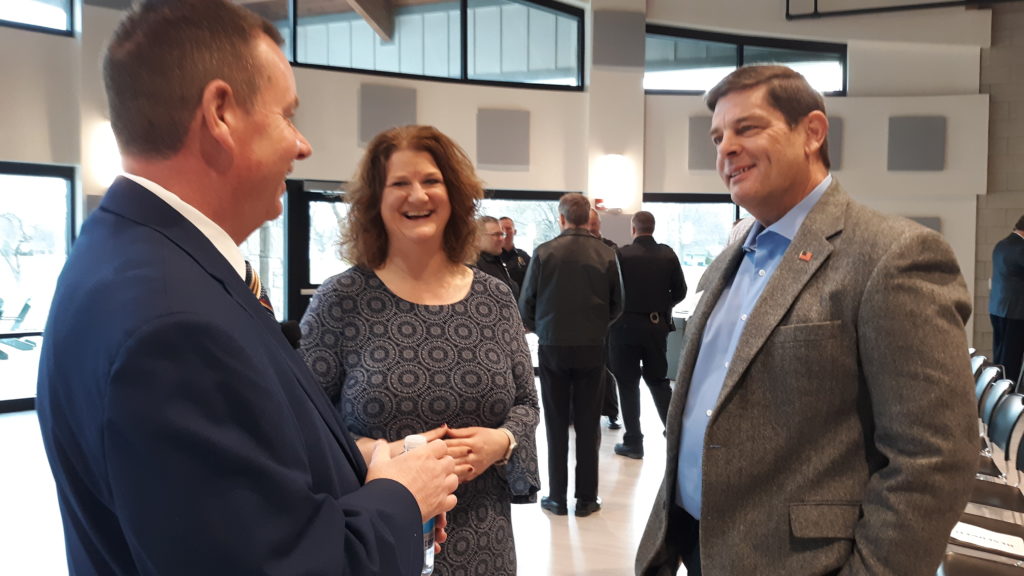
The mayor said he plans to appoint a committee to study the possibilities for the downtown.
“A strong downtown is a hallmark of a strong community,” he said.
The citizen-led committee will consider topics such as:
- Improving aesthetics such as murals and public art along with attractive and comfortable outside environments.
- Improving public spaces including consideration of increasing sidewalk widths and enhancing alleys.
- Promoting upgrades such as façade improvements.
- Considering best uses of the right-of-way areas in and around downtown.
- Analyzing parking options that could be considered in tandem with new mixed-use development.
- Promoting and encouraging investment within the downtown.
The city is also working hard to get the most out of the $7.3 million it received in American Relief Plan Act funds for COVID relief.
“I’ve been working with City Council on a strategy to leverage these funds to assure that they will have a broad, positive impact on our community,” Aspacher said.
Some ongoing community priorities are being addressed, like a three-year $3 million investment in residential road paving. Also for the next three years, the city will allocate $100,000 annually for housing-related grants intended to create improved neighborhood conditions and increased home values.
“It is critical that we invest in our current housing stock in an effort to support neighborhood revitalization efforts,” the mayor said.
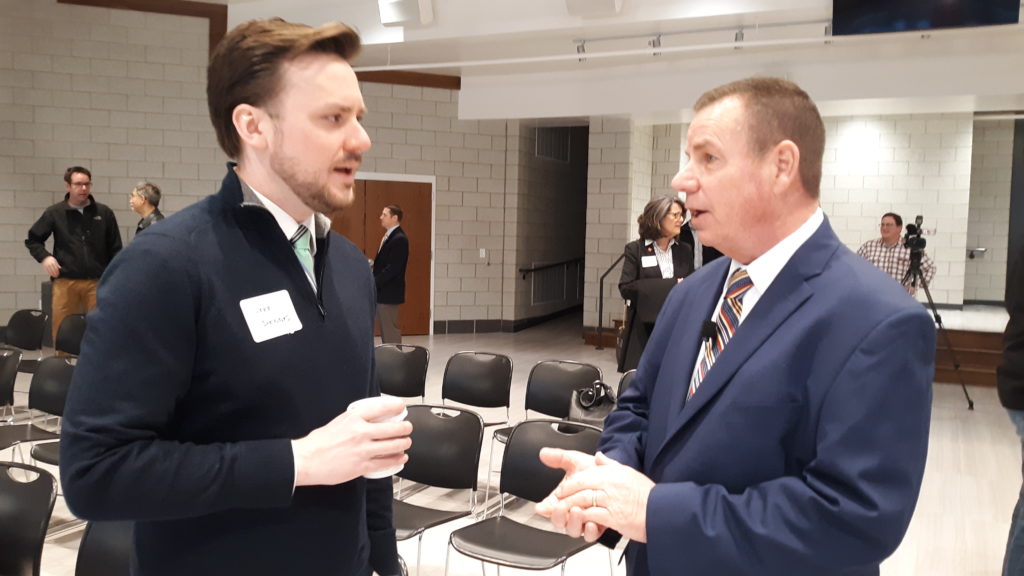
Other ARPA funds have been used to replace obsolete radio equipment for Bowling Green Police Division, and to switch over to the state’s Multi-Agency Radio Communications System. By installing a MARCS radio tower, communication issues for the fire division have been resolved.
Funds have also been dedicated to two park projects. In City Park, the money will be used to pave the road around the park, add a walking path and improve lighting and security. In Carter Park, money has been set aside to help the construction of an inclusive playground by Wood County Plays.
City Council has pledged to get input from the community on how the remaining ARPA funds will be used. The results of a community questionnaire on the topic will be reported in May.
“As a community, it is important that we continue to invest in ourselves, to challenge ourselves to new approaches for community enhancement, to listen to our citizens and businesses, to tackle the hard issues, and to pursue better tomorrows,” Aspacher said.
The mayor also talked about economic development successes in the city.
“We’ve been pleased at both new businesses locating in Bowling Green and investments by our current industries in the form of expansions, equipment advances and workplace expansion,” he said.
But Aspacher noted concerns about the lack of housing inventory in the city.
“We are examining innovative solutions to spur investments in housing in Bowling Green. Additionally, some residents are concerned with the availability of commercial options in town,” he said. “Again, we are challenging ourselves to understand the interests of our citizens and investigate different approaches to support business diversity.”
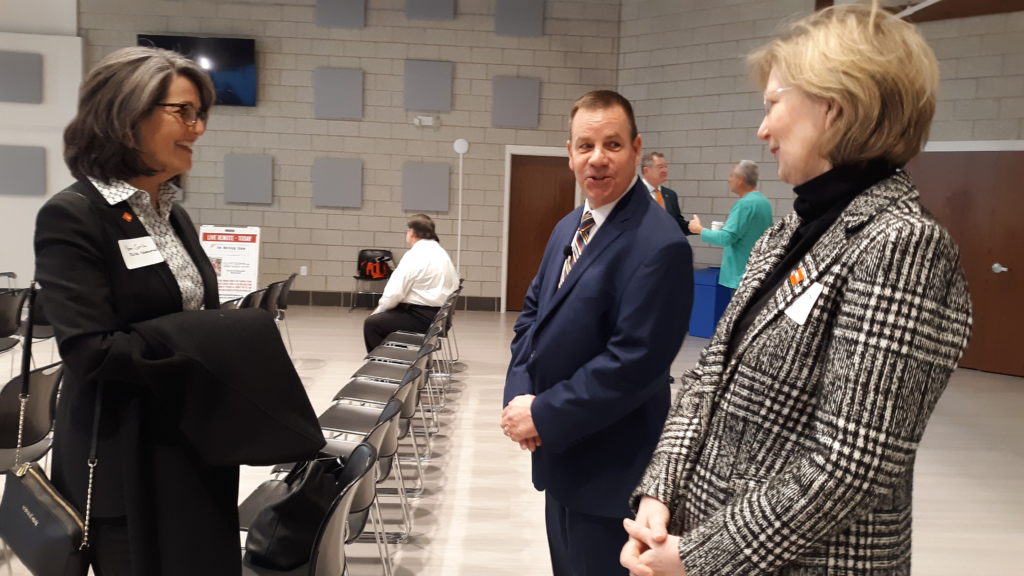
The mayor emphasized the value of shopping locally.
“I suggest we recommit to helping our residents understand the significant benefits of spending money in Bowling Green. We must continue to actively listen to those conducting business in Bowling Green and explore ways we can effectively support their needs.”
Meanwhile, some of the city’s core services are showing their age. The downtown police station is in need of upgrades that will allow the city to continue using the historic structure. The city has acquired land to the south of the police building, and serious discussions are planned about adding a dispatch and communications center there.
External public restrooms for the downtown are also being considered for the property south of the police station. The mayor said he will present the restroom plans to City Council in the near future.
Two city buildings near the corner of Thurstin and East Wooster streets are also in limbo – with that area being identified as a critical corridor for transition from BGSU to the downtown.
One of those city buildings, the Electric Division, is too small and it appears there may be an existing building that would suit its needs.
The other building, the Court Street Fire Station, underwent an analysis that said it would need a significant investment for long-term continued use. One area of concern is that the firefighters are housed above the engine room, creating a health and safety risk to the firefighters.
A study by the Ohio Fire Chiefs’ Association looked at run numbers and response time data. The study also considered future growth and the opportunity to improve response times in the city.
“When considering where a new station may be located, we must also consider the possibility of adding a potential third fire station somewhere in the city,” Aspacher said. “In sum, if we determine that two stations will be used in the near-term, certain locations are suggested. But, if a third station were to be built, those locations should be shifted to optimize response times to all citizens and to address future growth.”
The mayor thanked the community for its strength, endurance, flexibility, empathy and perseverance during the last two years of the pandemic.
“I think it is important to recognize the strength of our community members and let you know how proud I am to call you neighbors and friends and to serve as your mayor,” he said. “I encourage each of us to continue to collectively use our talents to maintain our recovery and build on our efforts to advance our wonderful Bowling Green community.”
